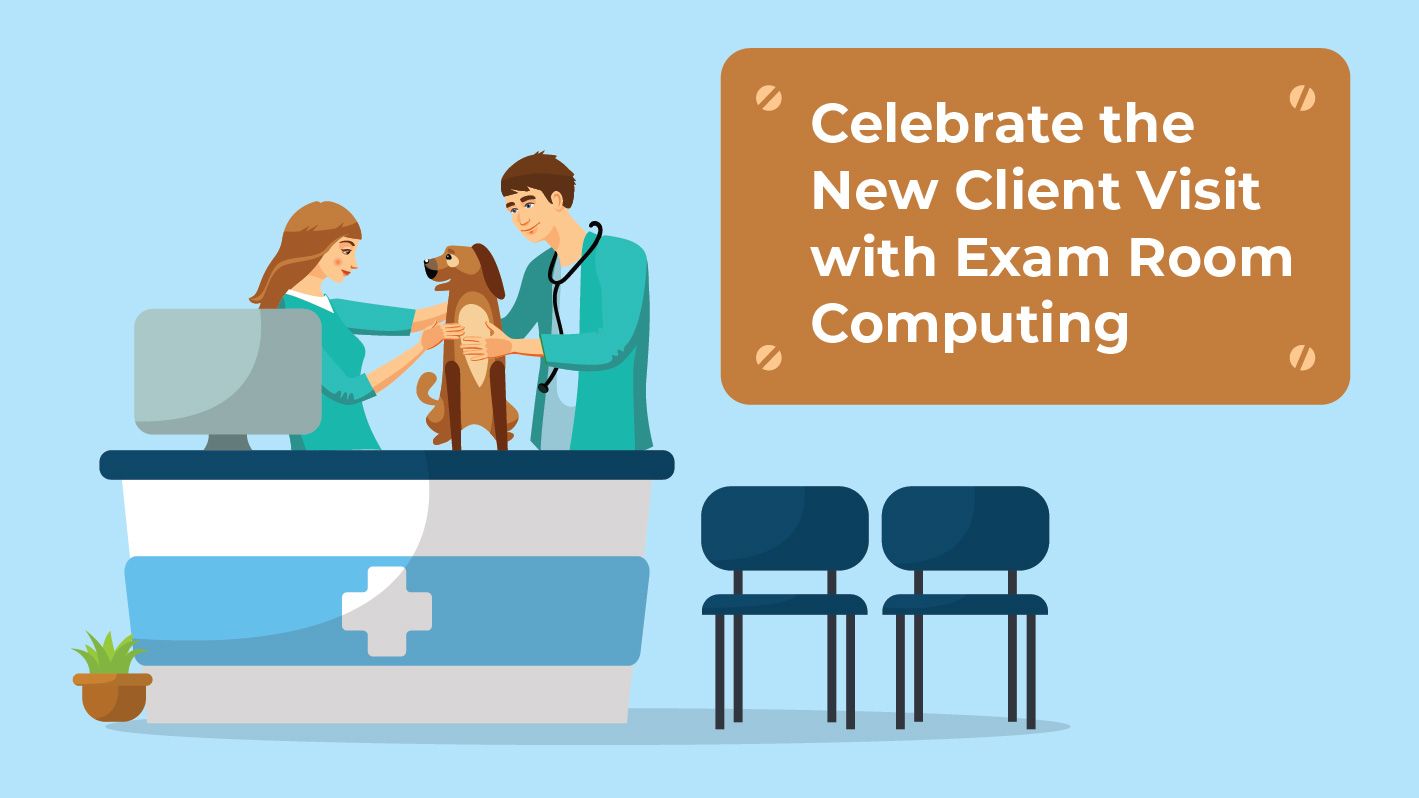
Celebrate the New Client Visit with Exam Room Computing
In the veterinary theater, the exam room is center stage and requires an ever increasing attention to detail. The staging of this environment will positively or negatively affect the clients' perception of the veterinary experience. The use of computers in this setting is critical to real time record keeping (EMR or Electronic Medical Record). There are many benefits associated with employing computers in the exam room. The few complaints are generally restricted to the diverted focus of the practitioner away from the patient/client and to the computer. There are simple solutions to this complaint. The introduction of computers and conducting the real time EMR will promote an optimal exam room experience. No longer shall the computer be relegated to function solely as a cash register or a tool to manage reminders and reports.
How can we celebrate the new client visit? When a new client comes to the office for the first time, the most dreaded task is all the paper work that is required before even meeting a caregiver. The burden of this task is amplified by the clients' attempts to manage their pet and or children at the same time as they complete the data entry. My thesis suggests taking that task away from the client and placing it on a staff member who will be completely responsible to the client throughout the visit. The continuity of care established by your staff member will be appreciated greatly by the client and color their "First Experience" in a very positive way. Once ushered into the exam room theater, the client may sit and relax while tending to their pet/children. The onus of data entry happens through pleasant questioning conducted by the staff member. There are no issues in reading and transcribing the client's handwriting. Opportunity exists to break down some barriers and enjoy a "soft entry" into the practice culture as demonstrated by the care and concern of the exam room nurse. Picture taking is a great way to bring joy to the moment. Head shots of owners with their pets can be uploaded to the EMR in real time. This is a perfect time to request permission to post those photos to your Facebook gallery. Should the practice require any written release, they may be obtained in the quiet of the exam room. Finally, the client is given a short tour of the practice's website and Facebook page. Keep in mind that the first visit happens only once and making the most positive experience goes along way in creating a foundation of respect for the practice and healthy concern for the client.
Once the basic client/pet demographic data has been collected, the nurse then continues the conversation by reviewing the presenting complaint and completing any history forms (online) that are commensurate with the nature of the visit. For example, history forms should be created for general wellness, puppy/kitten visits, lameness, opthalmic, and other issues. If the client has any records to review, they may be handed off to another team member for scanning and uploading to the EMR. Once the history has been entered, the nurse may continue with a preliminary exam while entering data points and acquiring photos of relevant physical findings. A nurses' exam will engage the client and include them in highlighting the physical findings while posting them to the medical record. If the monitor is wall mounted then the nurse and client can enjoy a shared experience.
The veterinarian enters the exam room after having reviewed the record (including the real time findings). Now the veterinarian becomes the protagonist and conducts an in depth exam, while the nurse is the scribe. The veterinarian's exam should be vocal and will allow both client and nurse to be informed of the doctor's findings at the same time. Once a plan is formulated, the nurse can take over the exam room theater and the doctor may go on to another room. Progress exams or appointments for any procedures should be made in the exam room where "Doctor Power" still reigns.
The entire process is intended to engage the client in a way to enhance transparency in the diagnostic exam and confer a degree of trust not otherwise possible. Today's veterinarian, irrespective of specialty,personal interest, or personality, remains charged with the most important task of being 'the great communicator'. Most all of our problems in practice derive from poor communication, be it between staff and client; doctor and staff; or doctor and client. Not the least of which are the problems derived from our poor communication with our medical record. Electronic medical records implemented in a direct and transparent manner provide the basis for trust between the client and veterinarian.

